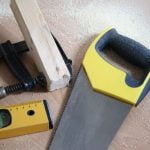Are home improvement loans a good idea? Home improvement loans are a popular tool for financing renovations and upgrades to your home. Whether it’s remodeling the kitchen, adding an extra room, or upgrading outdated fixtures, these loans can provide the funds you need to make your dream home a reality. However, like any financial decision, there are potential benefits and risks that should be carefully considered before committing to a loan.
Home improvement loans come in various forms, each with its own advantages and drawbacks. From secured loans that use your home as collateral to unsecured options that don’t require any asset backing, it’s important to understand the differences before making a decision. These loans can help finance larger projects and potentially increase the value of your home, but they also come with interest rates and fees that can add up over time.
When considering a home improvement loan, it’s crucial to evaluate your financial situation and determine if it’s the right choice for you. Factors such as your credit score, income stability, and overall debt load should all be taken into account before taking on additional debt.
However, if a loan isn’t the right fit for your circumstances, there are alternative financing options to explore such as personal loans or home equity lines of credit. Additionally, careful consideration of interest rates and terms is essential in order to secure the best possible loan for your needs.
Types of Home Improvement Loans
Secured Home Improvement Loans
Secured home improvement loans are backed by collateral, such as the equity in your home or property. Because of the asset securing the loan, lenders are often more willing to offer larger loan amounts and lower interest rates. However, this also means that if you default on the loan, you risk losing your home or property.
Unsecured Home Improvement Loans
On the other hand, unsecured home improvement loans do not require any collateral. These loans are typically based on your creditworthiness and may have higher interest rates compared to secured loans. Additionally, unsecured loans usually come with smaller loan amounts and shorter repayment terms.
Comparing the Options
When considering different types of home improvement loans, it’s important to weigh the pros and cons of each option. Secured loans may offer lower interest rates and higher loan amounts, but they also pose a greater risk to your assets. Unsecured loans, while easier to qualify for, often come with higher interest rates and stricter repayment terms. It’s crucial to thoroughly evaluate your financial situation before deciding which type of loan is best for your home renovation needs.
Pros of Home Improvement Loans
Home improvement loans can be a valuable financial tool for homeowners looking to fund renovation projects. There are several types of home improvement loans available, including secured and unsecured options. Secured loans require collateral, such as your home or car, while unsecured loans do not. It’s important to weigh the pros and cons of each type before making a decision.
1. Financing Larger Projects: Home improvement loans can provide the necessary funds to tackle larger renovation projects that may be beyond your immediate budget. Whether it’s a kitchen remodel, a new roof, or adding an extra room, a loan can help you transform your home.
2. Potential Increase in Home Value: By investing in renovations with the help of a loan, you have the opportunity to increase the overall value of your home. This can be especially beneficial if you plan to sell your property in the future, as the return on investment from the improvements could outweigh the cost of the loan.
3. Structured Repayment Plans: With a home improvement loan, you have access to structured repayment plans that allow you to pay back the borrowed amount over time. This helps you avoid draining your savings all at once and provides more stability in managing your finances.
Overall, when used responsibly and for worthwhile projects, home improvement loans can be a good idea for homeowners looking to enhance their living space and potentially increase their property value. However, it’s crucial to carefully consider whether taking on additional debt is financially feasible and fits into your long-term goals for homeownership. As with any financial decision, thorough research and thoughtful consideration should guide your choice when considering taking out a home improvement loan.
Cons of Home Improvement Loans
Home improvement loans can be a valuable tool for homeowners looking to make renovations or upgrades to their property. However, it’s important to consider the potential drawbacks and risks associated with taking on this type of debt.
One of the main cons of home improvement loans is the interest rates and fees that are often attached to these types of loans. Depending on your credit score, income, and other financial factors, you may end up paying a higher interest rate than you would with other types of financing.
Another downside to home improvement loans is the risk of taking on more debt. It’s essential to carefully weigh the benefits of the renovation project against the long-term financial implications of adding more debt to your existing financial obligations. Taking on additional debt can increase your monthly payments and potentially affect your credit score if not managed carefully.
When considering whether a home improvement loan is a good idea for your situation, it’s crucial to evaluate your current financial standing. Look at factors such as your overall debt-to-income ratio, credit score, and existing monthly expenses. It may be wise to consult with a financial advisor or a loan officer to get a better understanding of how taking on this type of loan could impact your financial health.
| Cons of Home Improvement Loans | How They Impact Homeowners |
|---|---|
| Interest rates and fees | Potential for higher payments over time |
| Risk of taking on more debt | Potential impact on credit score and monthly expenses |
| Evaluating financial standing | Importance of consulting with professionals before making a decision |
How to Determine if a Home Improvement Loan Is Right for You
If you are considering taking out a home improvement loan, it is essential to carefully evaluate whether it is the right financial decision for you. While home improvement loans can provide the funds needed to make significant upgrades to your property, they also come with potential risks and drawbacks. Here are some key factors to consider when determining if a home improvement loan is the right choice for you.
First and foremost, take a close look at your current financial situation. Consider your income, existing debt obligations, and credit score. It’s important to ensure that you have the ability to comfortably manage the additional monthly payments that come with a home improvement loan. Additionally, assess the potential impact of taking on more debt on your overall financial health.
Next, consider the scope of your home improvement project. Are you looking to make minor cosmetic updates, or do you have larger renovations in mind? Home improvement loans can be beneficial for more extensive projects that may require a significant amount of funding upfront. If your project is relatively small and manageable with your current finances, it might be worth considering alternatives such as saving up for the renovation instead.
Another crucial factor to consider is the potential return on investment. Will the improvements increase the value of your home? If so, a home improvement loan could be an excellent way to finance upgrades that will ultimately benefit you in the long run. On the flip side, if the renovations are unlikely to add substantial value to your property, it’s essential to weigh whether taking on additional debt is justified.
Ultimately, deciding whether a home improvement loan is suitable for you requires careful consideration of both your financial position and the specific details of your renovation project.
| Factor | Consideration |
|---|---|
| Financial Situation | Evaluating income, existing debt obligations, and credit score |
| Renovation Scope | Determining if the project warrants a significant amount of funding upfront |
| Return on Investment | Weighing whether the improvements will increase the value of your home |
Alternatives to Home Improvement Loans
Home improvement loans can be a great option for financing renovations, but they may not be the best choice for everyone. If you are unsure about taking out a home improvement loan, there are alternative options to consider:
Personal Loans:
If you have a good credit score, a personal loan can be a flexible and convenient way to finance your home improvement project. Personal loans typically have lower interest rates than credit cards, making them an attractive option for smaller renovations.
Home Equity Lines of Credit (HELOC):
A HELOC allows homeowners to borrow against the equity in their home. This type of financing often comes with lower interest rates compared to other forms of borrowing, making it an affordable option for larger renovation projects. However, it’s important to remember that using a HELOC puts your home at risk if you are unable to make the payments.
Saving Up:
While it may take longer to complete your home improvement project, saving up for the renovation instead of taking out a loan can save you money in the long run. By setting aside funds each month specifically for your renovation goal, you can avoid paying interest and fees associated with borrowing money.
Considering these alternatives before deciding on a home improvement loan is essential in determining the best course of action based on your financial situation and goals. Each method has its advantages and disadvantages, so it’s important to carefully evaluate each option before making a decision.
Tips for Getting the Best Home Improvement Loan
When looking to finance a home improvement project, getting the best possible loan terms is crucial in order to minimize costs and maximize the benefits of the renovation. Here are some tips for finding and securing the best home improvement loan for your needs.
Shop Around and Compare Offers
One of the most important steps in securing a good home improvement loan is to shop around and compare offers from different lenders. Different financial institutions will offer varying interest rates, fees, and terms, so it’s essential to do your research.
Online comparison tools can be helpful in providing an overview of what different lenders are offering, but it’s also worth reaching out to local banks or credit unions to see if they can provide competitive rates as well.
Improve Your Credit Score
Having a strong credit score can significantly impact the terms you are offered on a home improvement loan. Lenders typically reserve their best rates for borrowers with excellent credit, so taking steps to improve your credit score before applying for a loan can be beneficial. This may include paying down existing debt, correcting any errors on your credit report, and making sure all bills are paid on time.
Consider Government Programs or Special Offers
There are various government programs aimed at assisting homeowners with financing home improvements, such as Title I Property Improvement Loans and Energy Efficient Mortgages. Additionally, some lenders may offer special promotions or discounts on home improvement loans during certain times of the year. It’s worth exploring these options to see if you could benefit from any specific programs or offers that may be available.
By following these tips, you can increase your chances of securing a favorable home improvement loan that meets your needs without placing undue financial strain on your budget. Remember that thorough research and thoughtful consideration should go into making this decision – only then
Conclusion
In conclusion, home improvement loans can be a good idea for homeowners who are looking to finance major renovations or upgrades to their properties. These loans offer the opportunity to increase the value of your home and make necessary improvements without having to deplete your savings. However, it is essential to carefully consider the potential benefits and risks before taking out a loan.
Before deciding if a home improvement loan is right for you, it is important to assess your financial situation and determine if you can afford the monthly payments. Consider factors such as interest rates, fees, and terms of the loan to ensure that you are getting the best possible deal. Additionally, exploring alternative financing options like personal loans or home equity lines of credit may also be worth considering.
Ultimately, whether or not a home improvement loan is a good idea depends on your individual circumstances and financial goals. It is important to weigh the pros and cons carefully and consult with a financial advisor if needed. With proper planning and research, home improvement loans can provide an effective means of achieving your renovation dreams while adding value to your property.
Frequently Asked Questions
What Are the Pros and Cons of Home Renovation Loans?
Home renovation loans can provide the funds needed to upgrade a home, potentially increasing its value. On the downside, these loans can come with high interest rates and fees, adding to the overall cost of the renovation.
Is It Better to Pay Cash or Finance Home Improvements?
The decision to pay cash or finance home improvements depends on individual circumstances. Paying cash avoids interest and loan fees, but financing allows homeowners to make improvements without depleting their savings.
What Is the Average Length of a Home Improvement Loan?
The average length of a home improvement loan varies based on the lender and the borrower’s needs. Typically, these loans can have terms ranging from 2 to 20 years, with longer terms often resulting in lower monthly payments but higher overall costs due to interest.

I’m thrilled to have you here as a part of the Remodeling Top community. This is where my journey as an architect and remodeling enthusiast intersects with your passion for transforming houses into dream homes.





